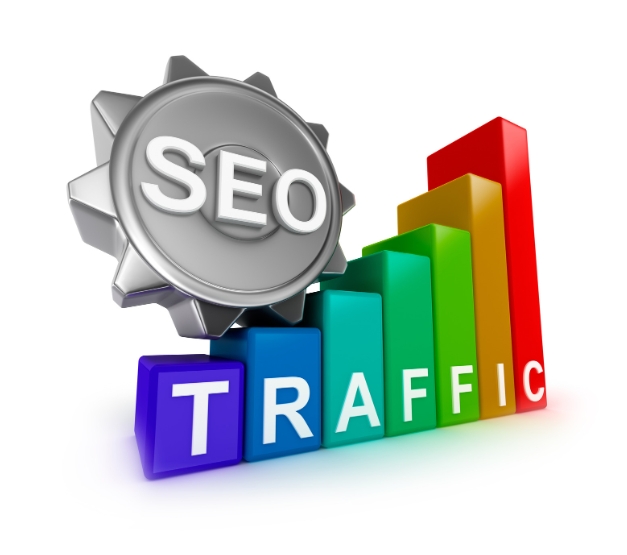In today’s digital age, e-commerce businesses must rely on online advertising to stand out in a crowded market. One of the most effective ways to drive targeted traffic to your e-commerce store is through Google Search Ads. These paid advertisements appear at the top of Google’s search results when potential customers look for products or services you offer. This article will explore Google Search Ads and provide actionable strategies that e-commerce businesses can implement to achieve success.
1. What Are Google Search Ads and How Do They Work?
Google Search Ads are text-based ads that appear at the top or bottom of Google’s search results page when users search for relevant keywords. For e-commerce businesses, this means your products or services can be prominently displayed to potential customers who are already actively searching for what you offer.
When you create a Google Search Ads campaign, you choose specific keywords related to your products or services. When users search for those terms, your ads appear in the results. Google uses an auction system to determine ad placement, with factors such as bid amount, ad quality, and relevance affecting visibility.
Key Metrics: Understanding metrics like CPC (Cost Per Click) and CTR (Click-Through Rate) is essential for evaluating your ad performance. These help measure the effectiveness of your campaigns in driving traffic and conversions.
2. Benefits of Google Search Ads for E-commerce Businesses
There are several key benefits to using Google Search Ads for e-commerce businesses:
- Increased Visibility: Google Search Ads ensure your business is front and center when potential customers search for relevant products. This helps to significantly increase visibility for your brand.
- Targeted Traffic: With Google’s keyword targeting, you can reach users who are actively searching for products similar to what you sell, ensuring your ads are shown to the most relevant audience.
- Cost-Effective Advertising: Google Ads operates on a pay-per-click (PPC) model, meaning you only pay when someone clicks on your ad. This makes it a flexible and budget-friendly option, even for small businesses.
- Measurable Results: Unlike traditional forms of advertising, Google Ads offers detailed performance metrics. You can track which ads are performing best and refine your campaigns based on this data.
3. Key Strategies for Google Search Ads Success in E-commerce
To achieve success with Google Search Ads, it’s essential to employ the right strategies. Here are some key tactics to help you make the most out of your campaigns:
Keyword Research & Selection: One of the most important steps in running a successful Google Ads campaign is selecting the right keywords. You should focus on terms that are directly related to the products you offer and reflect the search intent of potential buyers. Tools like Google Keyword Planner can help you discover high-traffic keywords that are relevant to your e-commerce business.
Create Compelling Ad Copy: Your ad copy is the first thing users will see when they search for products. Ensure your headlines are attention-grabbing and clearly convey what you’re offering. Your description should highlight key selling points and include a strong call to action (CTA), such as “Shop Now” or “Get Yours Today”.
Landing Page Optimization: Once users click on your ad, they should be directed to a landing page that matches the ad’s promise. Ensure the landing page is relevant, user-friendly, and optimized for conversions. A smooth and fast user experience increases the chances of turning visitors into paying customers.
Smart Bidding Strategies: With Google Ads, you can use smart bidding strategies to automatically adjust your bids based on factors like user behavior and competitor activity. You can optimize for maximize conversions or target CPA (Cost Per Acquisition) to make your budget go further.
A/B Testing: Experiment with different ad variations to find the best-performing ones. By testing multiple headlines, descriptions, and CTA phrases, you can determine which combination drives the most clicks and conversions.
4. How to Set Up Google Search Ads for Your E-commerce Business
Getting started with Google Search Ads can be straightforward if you follow these steps:
Step-by-Step Guide to Setting Up Campaigns
- Create a Google Ads account: Sign up for Google Ads if you don’t have an account yet.
- Define your campaign goal: Choose the right goal for your business, whether it’s driving traffic, generating leads, or increasing sales.
- Select your targeting options: Define the geographic area, devices, and audience you want to target.
- Choose your budget and bidding: Set a daily budget and choose a bidding strategy.
- Write your ad copy: Craft compelling headlines and descriptions that clearly describe your products.
Setting Campaign Goals: It’s essential to set clear campaign goals from the outset. Whether your goal is to drive website traffic, increase sales, or raise brand awareness, having a well-defined objective will help you measure success and optimize your campaigns.
Choosing the Right Budget: One of the most attractive aspects of Google Ads is the ability to control your budget. Start with a modest daily budget and adjust it as you see which ads generate the best results. Use Google’s automated bidding tools to maximize your return on investment (ROI).
Targeting Options: You can also refine your targeting based on location, device, and even demographics. For e-commerce businesses, this means showing your ads to the right people, at the right time, on the right device.
5. Optimizing Google Search Ads for Better Performance
To ensure your Google Search Ads campaigns remain effective, consider these optimization techniques:
Improving Quality Score: Google assigns a Quality Score to your ads based on their relevance and performance. To improve your Quality Score and lower your CPC, focus on creating highly relevant ads and landing pages, ensuring they align with your keywords.
Negative Keywords: Using negative keywords helps you avoid showing ads to users who aren’t interested in your products. For example, if you sell high-end electronics, you might add “cheap” as a negative keyword to avoid clicks from bargain hunters.
Ad Extensions: Ad extensions allow you to provide additional information in your ads, such as your business location, phone number, or additional links to specific pages on your site. Using these extensions can increase your CTR and improve ad performance.
Regular Monitoring & Adjustments: Consistently monitor your campaigns and adjust based on performance. Track metrics like CTR, conversion rate, and CPC to identify areas for improvement.
6. Common Mistakes to Avoid in Google Search Ads for E-commerce
Even seasoned advertisers can make mistakes with Google Ads. Avoid these common errors:
Over-Bidding: Over-bidding on popular keywords can deplete your budget quickly. Instead, focus on targeting highly relevant, less competitive keywords to maximize your ad spend.
Ignoring Mobile Optimization: With mobile traffic on the rise, it’s crucial to ensure that your ads and landing pages are optimized for mobile devices. Slow-loading pages or hard-to-read ads can hurt your conversion rates.
Not Analyzing Campaign Data: Google Ads provides a wealth of data on how your ads are performing. Failing to analyze and adjust your campaigns regularly can result in wasted budget and missed opportunities.
Takeaway
Google Search Ads are a powerful tool for e-commerce businesses looking to drive targeted traffic and increase sales. By following the strategies outlined in this blog, including smart keyword selection, compelling ad copy, and continuous optimization, you can see measurable improvements in your ad performance.
In brief, Google Search Ads are the catalyst for online growth. Join forces with Web Boost Online, the experts who turn digital dreams into reality, and position your business for triumph.











